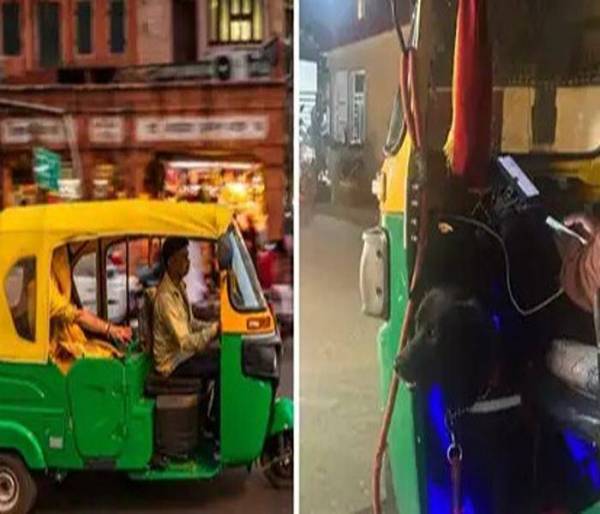
When a Highway Argument Went Viral: A short, chaotic clip from the Delhi–Moradabad highway has become a flashpoint online: two sisters, identified by many viewers as content creators Mehak and Pari, stopped an auto-rickshaw and argued about the route, and the disagreement quickly turned physical. In the span of the video they are seen pushing and slapping the driver, blocking traffic, and drawing a crowd. Faces were partly covered with masks, but social media users were quick to identify and speculate. The clip has split public opinion between those who defend the sisters’ stance and others who condemn the resort to violence.
Background and context
The incident reportedly occurred near Majhola police station in Moradabad, on the busy Delhi–Moradabad highway. According to the sisters’ own short explanation posted after the fight circulated, they claim the driver was verbally abusive and behaved rudely toward them; they say the driver started the physical aggression and they only retaliated after attempts at reasoning failed. The sisters framed their reaction as a refusal to be intimidated: according to their narration, the driver acted as if “girls would just take it,” and they wanted to respond to disrespect rather than passively accept it.
What the video shows
The clip depicts a sudden escalation. After stopping the auto, the sisters and driver argue forcibly; one sister follows the driver as he walks away and strikes again, and the driver retaliates. Traffic is slowed, passersby gather, and the whole episode gives the viewer little time to assess motive versus provocation. The footage does not contain the complete back-and-forth that would settle who started the physicality, which is why the police have declared they are investigating the authenticity and circumstances of the video.
Legal and policing response
According to statements reportedly given by local authorities, no formal complaint had been filed by either party at the time of reporting, and police said legal action would follow once facts are established. The immediate legal questions in such a case typically include whether any first information report was registered, whether assault or public nuisance sections apply, and whether bystander video evidence can be authenticated. Investigations in cases like this often rely on multiple videos, eyewitness testimony, and statements from the participants to create a timeline.
Public reaction and social media dynamics
The clip rapidly drew commentary across social platforms, including a post shared on X that amplified views and reactions. Reactions range from support—viewers praising the sisters for standing up to perceived harassment—to accusations of creating a stunt for views and exploiting the “women empowerment” narrative. A few users pointed out the sisters’ use of a line that echoed popular cinema dialogue, while others mocked or criticized the performative aspect of recording and posting such confrontations. This polarization reflects a larger trend: short viral videos compress context and encourage snap judgments, and audiences split along lines of instinctive sympathy or skepticism.
Gender, dignity, and spectacle
Incidents like this touch on deep social currents. On one hand, many people are tired of harassment and appreciate firm pushback against abuse; on the other, normalizing physical retaliation on a busy road raises concerns about safety, escalation, and the spectacle economy—where conflict can be intentionally amplified for attention and monetization. The sisters’ claim that they were defending their dignity resonates with those who see assertiveness as necessary, while critics warn that personal justice can quickly spiral into dangerous vigilantism.
Ethical considerations for viewers and creators
For creators, two lessons stand out: first, documenting a confrontation can protect against false accusations, but it can also be used to generate engagement at the cost of real harm; second, choosing de-escalation and official complaint channels often leads to better outcomes than prolonged on-camera fights. For viewers, the ethical duty is to avoid hasty verdicts based on a short clip and instead demand fuller information: who initiated aggression, are there corroborating videos, and have formal complaints been filed?
The role of bystanders and traffic safety
Beyond the interpersonal dispute, there’s a public safety angle. Blocking a busy highway, even briefly, endangers commuters and can catalyze secondary accidents. Bystanders who film instead of intervening raise questions about social responsibility: when should a passerby attempt to separate combatants, call police, or record evidence? Law enforcement guidance usually prioritizes calling for help and staying safe rather than physically inserting oneself into a violent scene.
What to watch for next
If the police investigation advances, watch for updated statements, FIR registrations, or additional footage. Proper authentication of the clip and eyewitness statements will shape any legal consequences. Until then, commentators and the public will likely keep debating the balance between self-defense and public order.
How incidents like this affect online culture
Viral episodes involving creators can incentivize risky behavior because controversy boosts visibility and follower growth. Platforms and followers play a role by incentivizing extreme content; creators seeking growth sometimes cross ethical lines for attention. Responsible audiences and platforms should demand clearer context and discourage glamorizing physical conflicts.
Practical advice for commuters and content creators
If you are a commuter or creator who finds yourself in a tense roadside situation, prioritize safety, avoid escalating, keep a safe distance, record only to protect yourself legally (not to provoke), and report to authorities. If you witness a dangerous escalation, call emergency services; your primary goal is to prevent harm, not entertainment.
Conclusion
This viral clip is a compact example of modern conflict: a brief physical clash that becomes a national conversation about dignity, safety, and the mechanics of virality. Without full context, moral certainty is premature. The best responses are cautious: seek verified facts, prioritize safety, and let due process work through police inquiry rather than verdicts formed from seconds of footage